
By Andre Egli
Close your eyes, and think back to the very first time you went fishing (now open them because this is a blog and you’ll need your eyes to read it). It was probably with your parents or your grandparents on a small pond or lake near where you grew up. If your first fishing memory is of catching Blue Marlin on the Great Barrier Reef, I’m super jealous of your life and this post isn’t for you. Now try to imagine the very first fish you ever caught, the moment the bobber plunged under the water and you set the hook to feel a furry of frenzied movement on the other end of the line. When you finally got that monster to the shore and you held it up to the camera I bet it looked a little something like this:

Bluegill or Lepomis macrochirus
Yes, our dear old friend the Bluegill, or Lepomis macrochirus if you want to be arrogant about it. Bluegills and their cousins in the sunfish family (or panfish family as I called them growing up) can be found just about everywhere in the United States and Canada. They’re relatively easy to catch and their size makes them great targets for children who are just learning to fish. Bluegills are also good fighters for their size, darting about swiftly and even occasionally taking to the air.
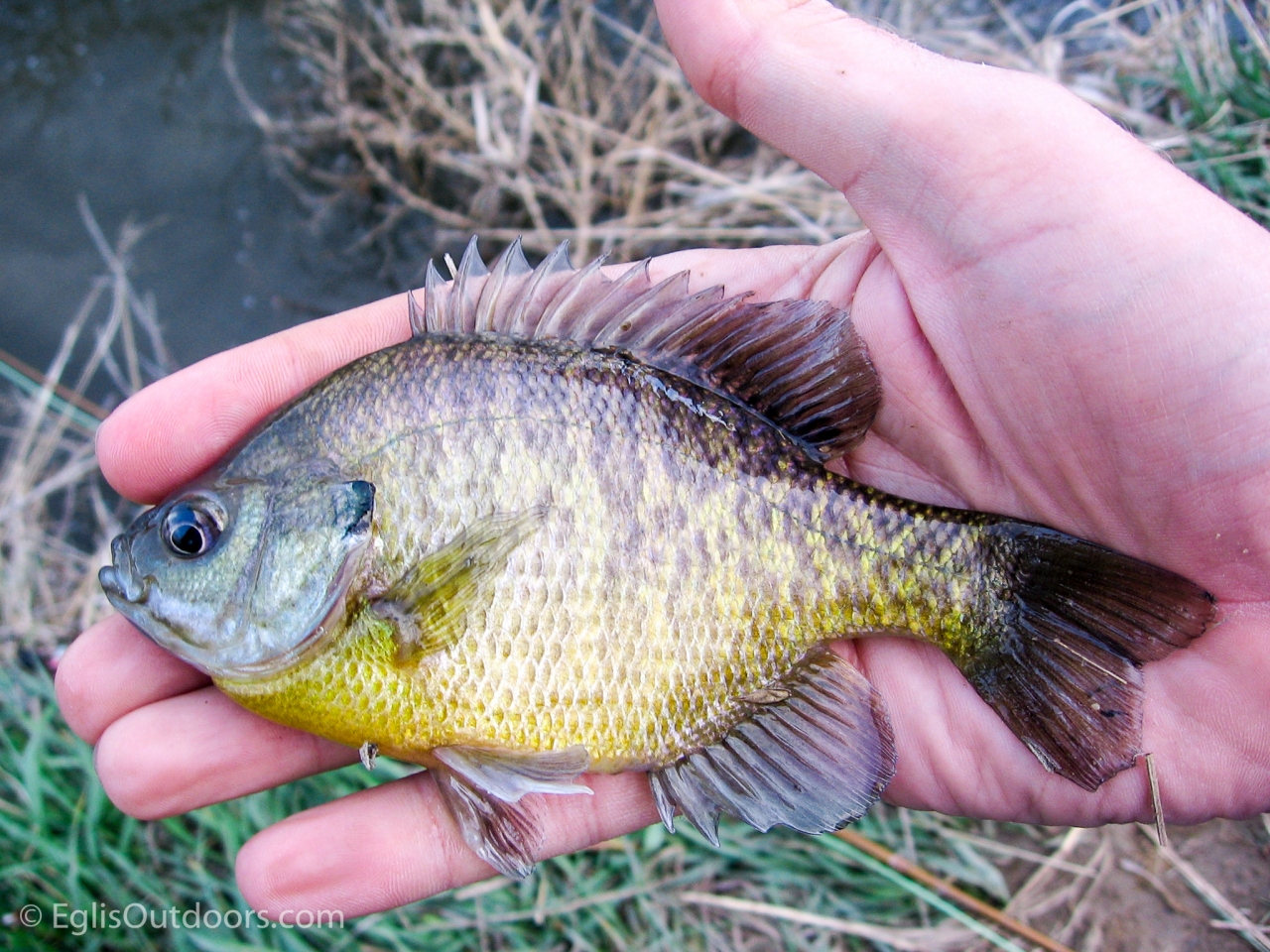
Bluegill or Lepomis macrochirus
Despite our early love of the Bluegill and his cousins, as we grow up we turn our attention to bigger fish like Walleye, Bass, Pike, Salmon, and Trout. I’m guilty of it myself; I’m always looking for bigger and better fish which leaves little room for the lowly Bluegill. But I say, no more!

Pumpkinseed or Lepomis gibbosus
While winter still holds fast over the high country in Colorado the ponds and lakes on the eastern slopes of the Rockies have opened up. And you’ll never guess what’s in almost all of them, that’s right, our pal the Bluegill. On top of that, do you know what Bluegills eat? If you don’t I’ll save you a trip to Google. Bluegills and their cousins’ main source of food are aquatic insects such as mayflies, caddis flies, and dragonflies. Sound familiar? So Bluegills are plentiful, relatively easy to catch, and they eat the exact same stuff as trout. So, if you have trout flies you have Bluegill flies.
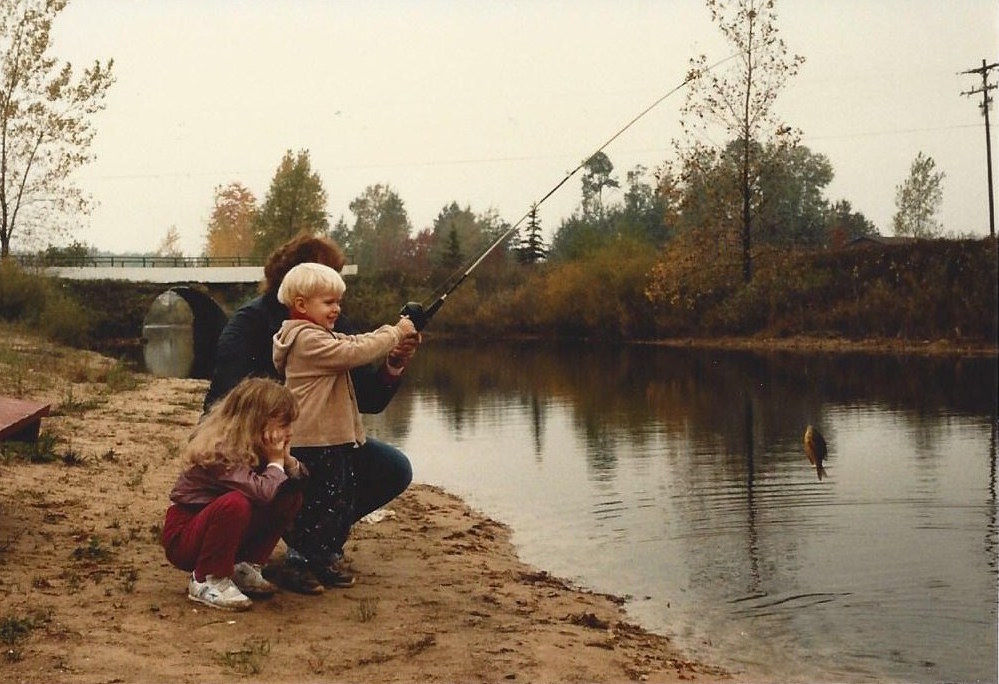
My first fish ever!
In my experience Bluegills will strike dry flies and nymphs equally so a dry dropper rig is the way to go. Remember they have very small mouths so smaller flies are best. Also, be sure to have a pair of pliers handy because Bluegills are aggressive feeders and will inevitably swallow a hook. If you don’t want to buy a new rod to hunt Bluegill don’t worry you can easily use your 5, or even 6wt just as you do with trout. However, if you want to have a bit more fun you can pick up a lighter 4 or 3wt rod and really feel those sunfish fight.
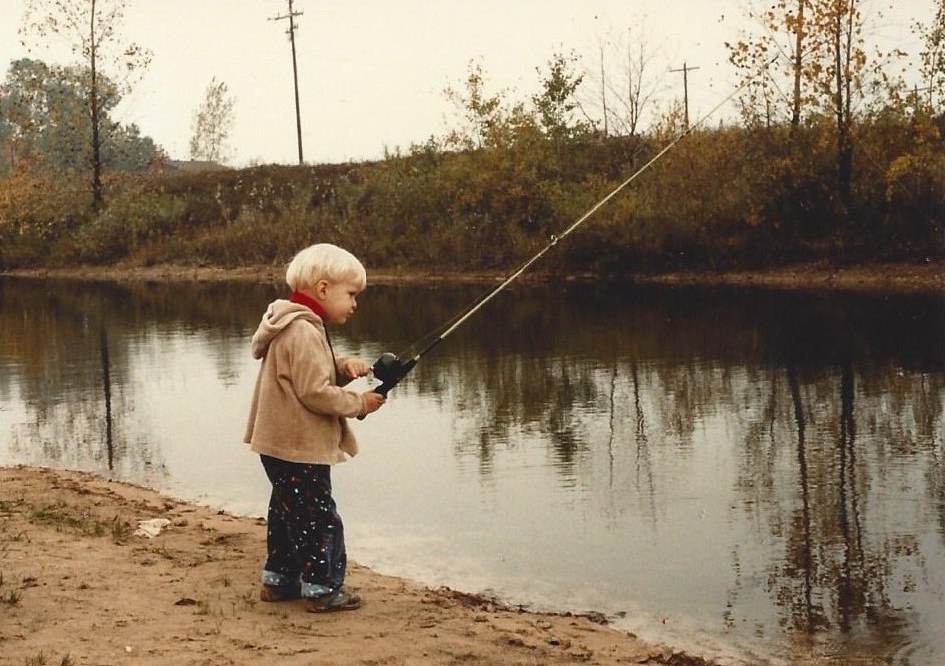
Early in the season as the ice leaves the ponds and lakes Bluegills can be found in the shallows typically near structure such as roots, boat piers, weed beds, and overhanging trees. These locations present a difficult cast but you don’t have to be perfect because the Bluegill’s aggressive feeding will make up for a not so perfect cast. Later in the spring, Bluegills spawn and can be found protecting their eggs. At this time of year you can repeatedly catch the same fish over and over again as they attack anything bite sized near their eggs. However, I advise against this because you can exhaust and kill a fish with repeated catching and thus endanger the next generation. Instead go for the fish that aren’t guarding eggs, they’ll still be there, all over the lake typically near some sort of structure:
I’m not saying you should ignore the bigger, stronger fish entirely, by all means keep after them, I will do the same. I’m just saying, think back to those early years and how much fun it was to catch those Sunfish growing up and throw them a line every now and again. With their abundance, the odds are you could walk down the street to your local park and catch some. They won’t be trophies but they’re still fun to catch. It’s also a great way to get out and work on your presentation and your casting, while still getting the thrill of catching something. So please, don’t forget your old pal who has been with you since the beginning. Until next time, happy fishing!
– A. Egli




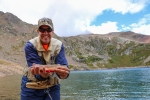
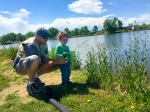
Leave a comment